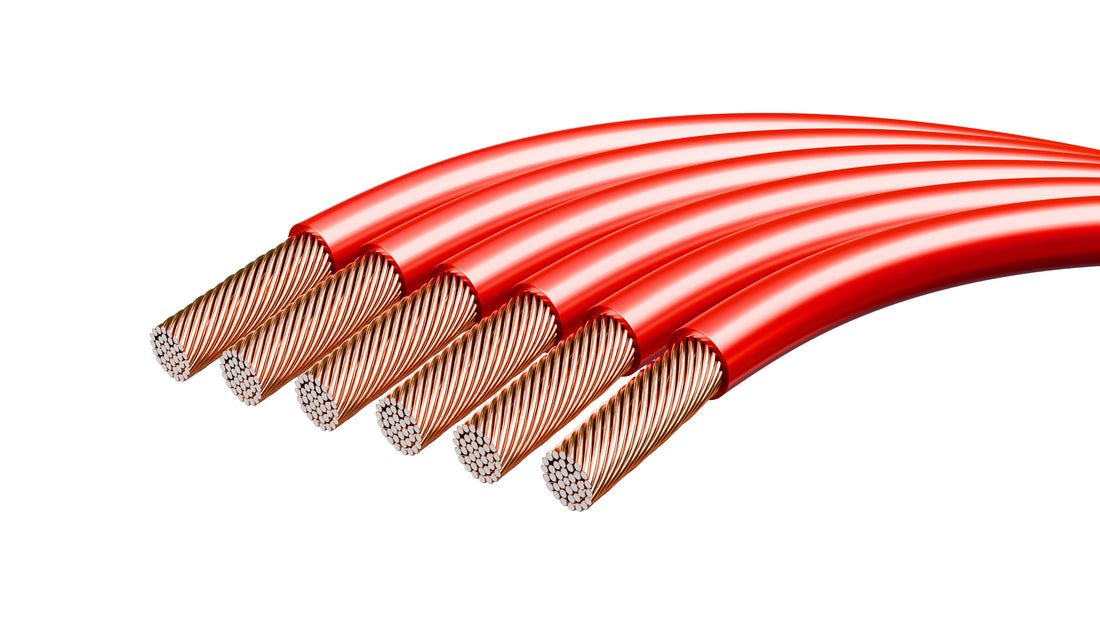
What Does The Red Wire Mean? A Guide to Red Wire
Share
Introduction
If you've ever found yourself looking at a tangle of wires and wondering what each one does, you're not alone. Understanding the purpose of each wire is crucial, especially when it comes to electrical work. One wire that often catches people's attention is the red wire. What does the red wire mean? Is it different from the other wires? In this guide, we'll delve into the mystery of the red wire and explore its significance in electrical systems. Whether you're a DIY enthusiast or simply curious, join us as we unravel the secrets behind the red wire.
Don't forget to look at our other articles:
- What Does The Blue Wire Mean?
- What Does The Black Wire Mean?
- What Does The Green Wire Mean?
- What Does The Yellow Wire Mean?
- What Does The White Wire Mean?
What the Red Wire Means in Electrical Systems
In electrical systems, the red wire typically serves as a secondary live wire for 220-volt circuits or as a switch leg for lighting applications. Its role extends to connecting hardwired smoke detectors to a home's power supply, ensuring continuous operation. Moreover, the red wire often denotes the positive terminal in DC power systems, especially in automotive and battery-powered electronics. In multi-wire branch circuits, it carries the second phase of electrical current, which is vital for balancing the load. This multifaceted use underscores the red wire's importance in various electrical configurations.

Understanding the Role of Red Wire in Electrical Systems
Red wires are indispensable in various electrical setups, particularly as secondary hot wires in 220-volt circuits. These wires provide power to heavy-duty appliances such as ovens and water heaters. They are also integral to switch legs, connecting switches to the electrical devices they control. In three-way switch configurations, red wires enable the control of a light from two different locations, enhancing convenience and functionality. Additionally, red wires are vital for the proper operation of ceiling fans, where they link fan and light kits to the power source, ensuring seamless performance.

Troubleshooting Issues with Red Wire
Identifying whether the red wire is connected to a switch or a lighting fixture is crucial for understanding its role within the circuit. Observing for any visible damage, fraying, or loose connections can quickly reveal potential sources of issues. Utilizing a multimeter to test the red wire for continuity ensures it is neither broken nor faulty. Additionally, verifying that the red wire is correctly paired with the corresponding black and white wires is essential for maintaining proper electrical flow and adhering to safety standards. These steps collectively aid in diagnosing and resolving problems associated with red wires in electrical systems.

Key Functions of the Red Wire Explained
Frequently utilized as a secondary hot wire, the red wire in 220-volt installations provides power to devices such as stoves and dryers. In multi-way switch configurations, this wire acts as a traveler wire, connecting switches and enhancing control flexibility. Ceiling fan installations benefit from the red wire, allowing separate control of the fan and light from a wall switch. Additionally, its role as an interconnect wire in smoke detectors ensures that all alarms sound simultaneously, thus enhancing household safety. This versatile wire is crucial in various electrical applications, highlighting its multifaceted utility.

Common Misconceptions About What the Red Wire Means
Many people mistakenly believe the red wire is always the live wire in electrical systems, which is not universally true. Some assume the red wire indicates a ground wire, but it often serves as a secondary hot wire or traveler wire in certain circuits. There is a common myth that the red wire is interchangeable with black wires, yet they frequently have specific and different functions. It is a widespread misconception that red wires are used only in residential wiring, whereas they are also prevalent in commercial and industrial settings.

What Are Some Safety Tips When Handling Red Wire?
Before handling red electrical wires, always ensure the power is turned off at the circuit breaker to prevent electric shock. Enhance your personal safety by using insulated tools and wearing rubber-soled shoes. Double-check the wiring diagram and labeling to correctly identify red wires, as they commonly signify a secondary hot wire in a circuit. Additionally, avoid working with electrical wires in wet or damp conditions to reduce the risk of electrocution or short circuits. Taking these precautions significantly minimizes the dangers associated with electrical work.

Conclusion
In conclusion, the red wire holds a multifaceted role in various electrical systems, serving as a secondary live wire in 220-volt circuits, a switch leg in lighting applications, and a traveler wire in multi-way switch configurations. Its critical function extends to automotive and battery-powered electronics as the positive terminal, and it plays a vital role in balancing electrical loads in multi-wire branch circuits. Understanding the specific applications and safety measures associated with red wires is essential for both residential and commercial electrical work. By debunking common misconceptions and adhering to proper troubleshooting techniques and safety precautions, one can ensure effective and safe handling of red electrical wires. This comprehensive knowledge not only enhances the efficiency of electrical systems but also contributes to the overall safety and functionality of the installations.








